Yule Log – Enjoying A Simple Winter Solstice Tradition
This post may contain affiliate links. Read my full disclosure here.
Maybe you’re inquisitive like I am, or maybe you want to get away from commercialism and enjoy some simpler holiday traditions. Either way, I want to share with you the meaning behind the Yule Log, and how to incorporate it into your winter celebrations.
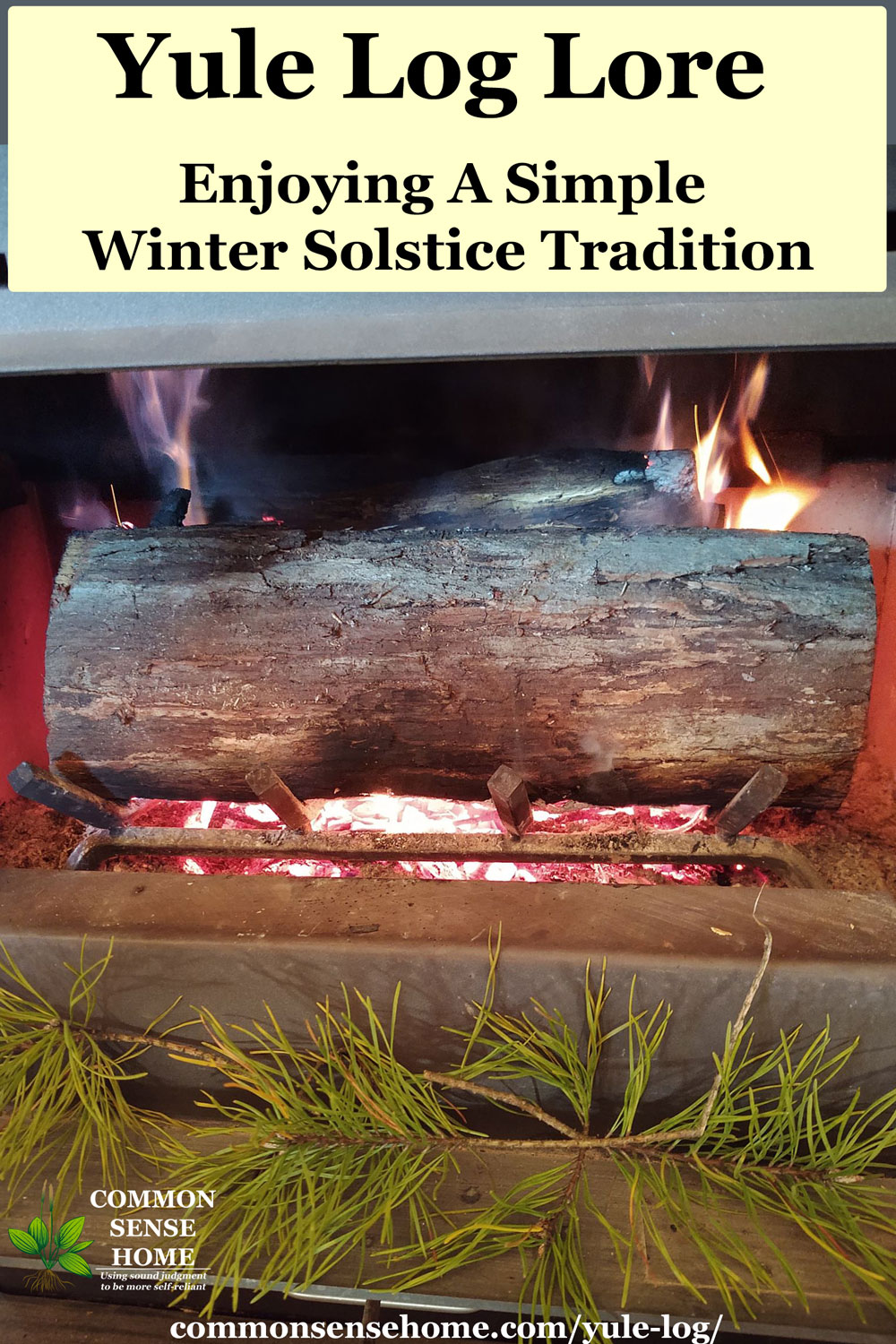
The Meaning Behind The Name “Yule”
The name “Yule” refers to a winter festival between December and January. It comes from the old Germanic lunar calendar. Yule also represents the twelve days of Christmas, the Feast of the Nativity, a Christmas Goat in Scandinavian countries, and Winter Solstice. The word Yuletide refers to the entire seasonal celebration.
If you’re still wondering where the trolling the Yuletide carol comes into play, the word Troll means to sing out loud, chant merrily or jovially. So if one is trolling Yuletide carols, they are happily singing Christmas songs.
What Is A Yule Log?
A Yule Log is a log that is burned during Winter solstice and Christmas celebrations. Although some believe its origins are Pagan, the practice of burning a Yule log began in Medieval times as a Nordic tradition. As it has spread throughout the world, each country has made its own little changes throughout the centuries.
In the beginning, families would go into the woods and find a robust tree to harvest. They would put the whole tree in the fire starting with the trunk end, and burn it the entire twelve days of Christmas. Any remaining part of the tree would be stored and saved until the next year and used to start the new Yule log.
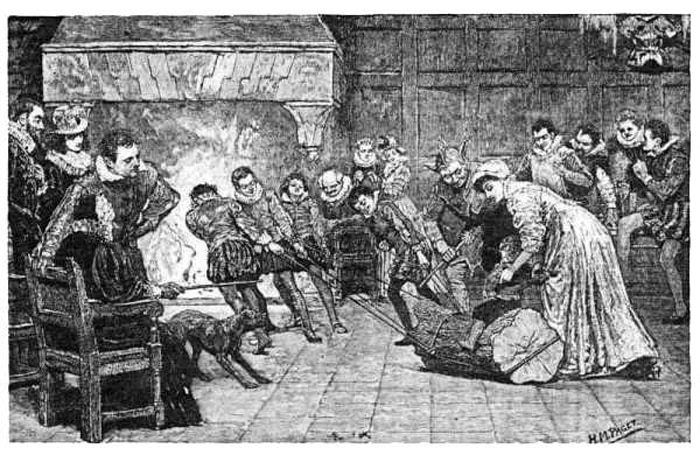
Others would pick a hearty log to burn on Christmas Eve and use the log from the previous year to light the new one.
Ashes To Ashes
Ashes from the burning of the Yule log would be stored and used in gardens, mixed with livestock feed or spread on the fields. This was done to ensure the health of the animals and crops.
More superstitious folks believed the storing of the Yule ashes would help keep evil spirits away. However, those of Christian faith felt the ashes represented Christ’s victory over sin.
We use ashes for many things on our homestead, such as dust baths for our chickens and de-icing our steps. You can find more uses for your wood ash here.
Yule Logs Around The World
I’ve always found it fascinating to learn about the traditions of different cultures.
As a child, my world consisted of my home. It never occurred to me to inquire how others celebrated the holidays. I just assumed we all did it the same.
Now thanks to the world-wide-web, I can learn about other winter traditions.
- England – In England the Yule Log is called “the Mock”. Oak is the preferred wood, and it dried and the bark removed before burning.
- Scotland – The Scottish Cailleach Nollich is made of birch. Several traditions surround the burning of the log, including a huge tug-of-war.
- France – Cherry is the wood of choice in France. I like their tradition of pouring wine on the log so it smells good as it burns.
- Norway – The Norwegian Jól log is made from Spruce, Pine or Fur. Celebrations of the Yule date back to the 4th century.
- Ireland – In Ireland they burn a candle instead of a log. This candle is lit the night before Christmas and to welcome Joseph and Mary on their journey.
- The United States – In the US, we skip burning logs and go straight to dessert. Mention “yule log”, and most people think rolled up cake. Along with the chocolate cake, we also use decorated logs as part of our holiday decor.
- Devon and Summerset – Unlike other parts of the UK that burn a log, in Devon and Summerset they burn an Ashen Faggot during their Yule festivities.
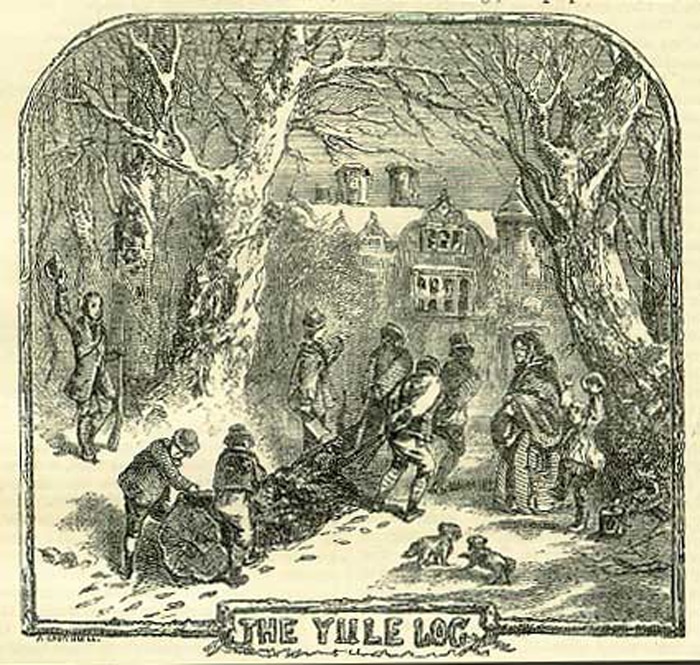
What is an Ashen Faggot?
The ashen faggot (also known as Ashton fagot) is an old English Christmas tradition from Devon and Somerset, similar to that of the Yule log and related to the wassail tradition.
The Ashen Faggot is a small bundle of twigs and branches, sometimes bundled together to be thrown on the fire, and other times wrapped around a piece of green lumber and burnt.
Would you like to save this?
The term Ashen comes from the Ash Wood used to make the bundles. Whereas the term faggot means a bundle of sticks.
In some areas, the single women of the gathering selected special sticks for the bundle. If a young lady’s stick ignited first, she’d be the next one to marry. Guests gather pieces of the burned faggot to add to their bundle the following year.
Bûche de Noël (Yule Log Cake)
Over the years, homes were no longer built with hearths that could hold an entire tree. This led to the yule log cake, or Bûche de Noël. Dating back to the early 1600s, it’s one of the oldest cakes still made today.
Typically this cake has a chocolate sponge cake base with a cream filling. The cake is decorated with meringue, marzipan, and spun sugar to resemble a log. Get our yule log cake recipe here.
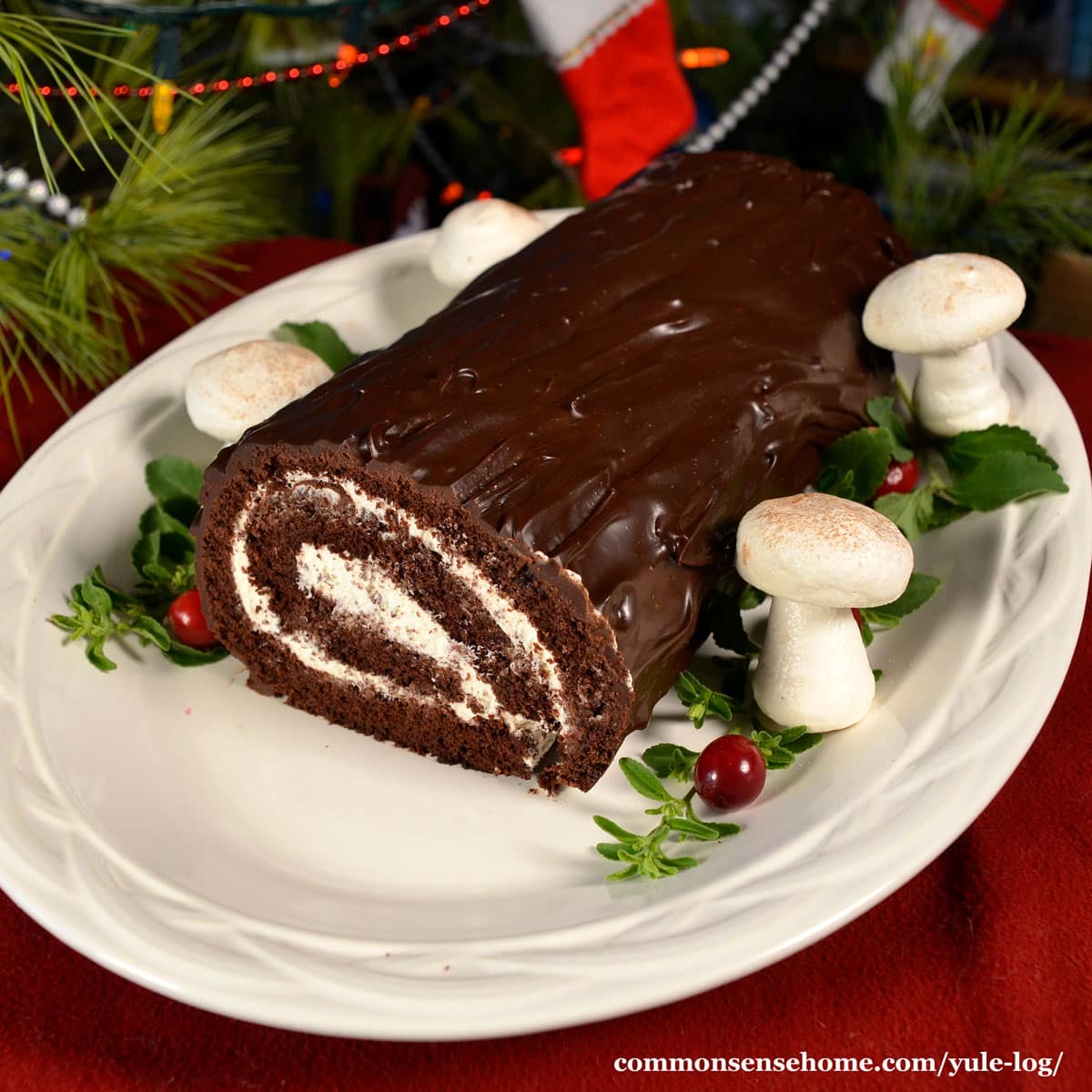
How To Make A Decorative Yule Log
We don’t have an enormous hearth to burn a large section of tree, but we can certainly make a cake, harvest a smaller log, or gather twigs for an Ashten Faggot.
Another way to add a Yule Log to your festivities is to make one to use for decoration. The supplies are simple, and it’s sure to add some holiday cheer.
Supplies
- 12-14 ” dry log. (Make sure to check for bugs to avoid unwanted guests.)
- Dried berries such as cranberries.
- Pinecones, pine needles and or holly.
- Cinnamon sticks
- Ribbon
- Hot glue
- Candles (optional)
Directions
- Place the long on the table and turn it until it will stay still and not roll.
- Using your hot glue gun, decorate your log with pinecones, berries, ribbon, or other natural decorations.
- If desired, drill holes to fit your candles into the log.
- Burn your log during the holidays, or save and reuse from year to year.

To me, the best part of yule log traditions is that they encourage us to slow down and gather with friends and family, and bring some light into the dark days of winter.
Have you ever burned a yule log or made a yule log cake? I’d love to hear about other simple holiday traditions, too. It’s wonderful to learn about different celebration styles that don’t involve shopping til you drop.
More Simple Living Inspiration
Here are some more musings from the homestead to inspire simple living:
- No More Gold Stars – Creating Real World Rewards
- 7 Things My Mama Told Me
- Workin’ in My Winter Underwear

This post is by Amber Bradshaw of My Homestead Life.
Amber and her family moved from their tiny homestead by the ocean in South Carolina to forty-six acres in the Smoky Mountains in East Tennessee.
While building their off-the-grid homestead, they live like the days of old – cooking without electricity, collecting water from the creek and raising chickens, goats, pigs, turkeys, bees, and guineas. They’ve recently filmed their journey for a TV show on the Discovery Channel and the DIY Network/HGTV called Building Off The Grid: The Smokey Mountain Homestead.

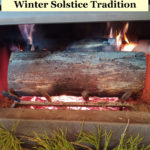
I enjoyed your article but wonder if you could please provide references especially regarding the spreading of the ashes after the Yule log has been burned. I’m sharing information about the origins of Christmas with the children of my nieces and nephews who will want substantiation for my ‘facts’. Thanks again for your delightful article.
Hi Wendy.
Amber’s busy writing a book right now, so you’ll need to do some more hunting on your own. The Scotland and Norway links within the post do link to additional information.
Happy Holidays to you and yours Laurie! When I was about twelve I baked a Bouche de Noel for our family celebration. I remember the recipe called for a dozen eggs which seemed very expensive at the time! It was fun decorating it to look like a log. Wishing you Peace and Joy! Judy
12 eggs is a lot, but that would match some of the more traditional recipes I’ve seen. I opted for something a little simpler in our homespun version- only 3 eggs, and some applesauce to keep it nice and moist.
I hope you an your loved ones have a joyful holiday season and a bountiful new year.
Wonderful information on the Yule tradition. Happy holidays and yay for the Solstice.
Thank you, Kim, glad you enjoyed it.